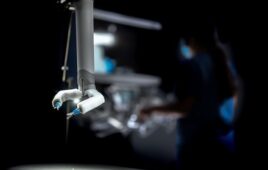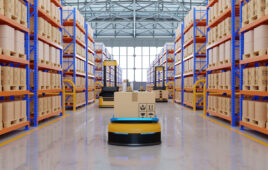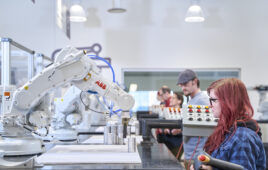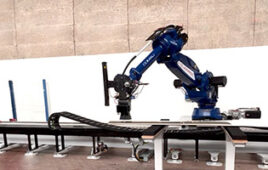It seems trite to say that Newton’s basic laws of motion still haven’t changed. A body in motion tends to stay in motion, except when it hits something else or slows down and coasts to a stop.
Let’s take these two options separately. In last week’s post I mentioned the large diameter fan in a cooling tower. That load has a lot of friction in it due the nature of the blade’s opposition to the air. This helps slow the load to a stop in the event that the fan motor loses power completely. And since there is usually a gearbox to provide mechanical advantage to the motor in starting and maintaining the load, that same gearbox provides significant inertia load to slow down the fan blades by increasing the apparent inertia of the rotor mass.
This is not always a bad thing. Many times the frictional aspect of the load conditions will help during deceleration and during power failures. The only real caution here is don’t forget to include friction in the description of the load when you are sizing a motor. I had a friend provide me with a very elegant 11 page analysis of the load inertia of a special conveyor. After we got done building it, we noticed that the drives seemed extremely under powered. It turned out the inertia calculations were perfect, but he had forgotten to include the friction, which was so large that it caused us to have to increase the motor size by two frame sizes. It was a very expensive lesson for all of us.
With respect to hitting things, this can be a real problem, especially in the world of robots. High speed, repetitive motion requires a lot of electromechanical energy. Stopping these systems is not as easy as it looks. Stopping when something unexpected gets in the way is usually out of the question.
I was surprise to learn of a company that had starting working on the problem of how to create safe robots a few years ago, and their solution was so successful that the company is now doing 14 million Euros and operating all over the world. The company is Universal Robots. Their robots are lightweight, low cost and include high speed torque control algorithms that sense a collision as a torque disturbance that does not match the planned trajectory. Just as the StopSaw can stop a turning saw blade at 6000 RPM, the robot’s torque loop sensors respond in a couple of milliseconds and safely disable the robot.
This makes the robot safe for human “collaboration” without the need for complex safety curtains. This feature, among many others, makes the robot much more suited to industrial application and is paving the way to applying robots with paybacks of less than 1 year in some cases.
It’s amazing what a couple of grad students can come up with, with a little encouragement from industry and help from their government and private investment community. The investors guessed right and we will be seeing a lot of Universal Robots in the near future.
Filed Under: Mechatronics, Robotics • robotic grippers • end effectors, Mechatronic Tips




